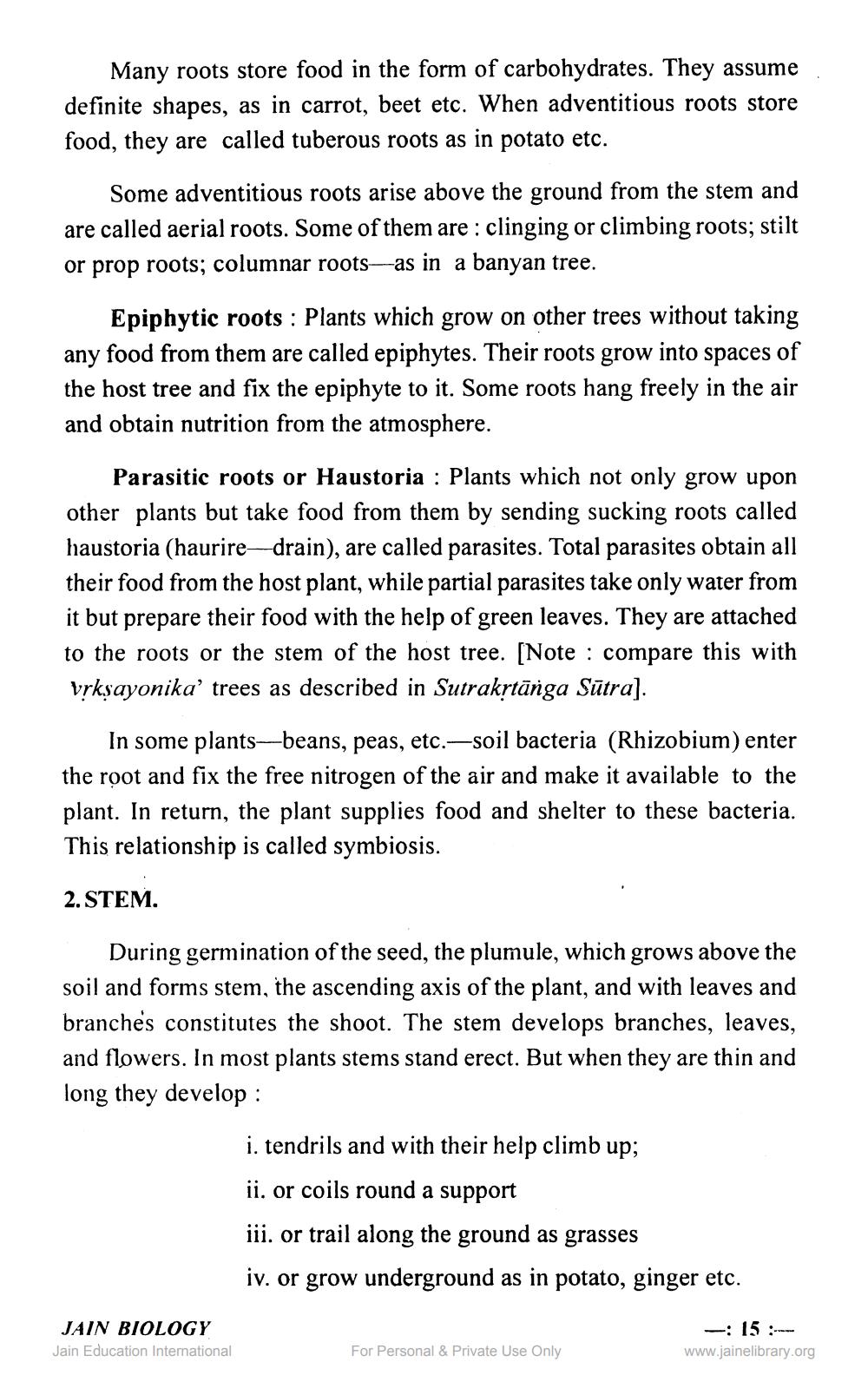________________
Many roots store food in the form of carbohydrates. They assume definite shapes, as in carrot, beet etc. When adventitious roots store food, they are called tuberous roots as in potato etc.
Some adventitious roots arise above the ground from the stem and are called aerial roots. Some of them are : clinging or climbing roots; stilt or prop roots; columnar roots—as in a banyan tree.
Epiphytic roots : Plants which grow on other trees without taking any food from them are called epiphytes. Their roots grow into spaces of the host tree and fix the epiphyte to it. Some roots hang freely in the air and obtain nutrition from the atmosphere.
Parasitic roots or Haustoria : Plants which not only grow upon other plants but take food from them by sending sucking roots called haustoria (haurire-drain), are called parasites. Total parasites obtain all their food from the host plant, while partial parasites take only water from it but prepare their food with the help of green leaves. They are attached to the roots or the stem of the host tree. [Note : compare this with vrksayonika' trees as described in Sutrakrtānga Sūtra].
In some plants-beans, peas, etc.—soil bacteria (Rhizobium) enter the root and fix the free nitrogen of the air and make it available to the plant. In return, the plant supplies food and shelter to these bacteria. This relationship is called symbiosis.
2.STEM.
During germination of the seed, the plumule, which grows above the soil and forms stem, the ascending axis of the plant, and with leaves and branches constitutes the shoot. The stem develops branches, leaves, and flowers. In most plants stems stand erect. But when they are thin and long they develop :
i. tendrils and with their help climb up; ii. or coils round a support iii. or trail along the ground as grasses iv. or grow underground as in potato, ginger etc.
JAIN BIOLOGY Jain Education International
- 15:www.jainelibrary.org
For Personal & Private Use Only




